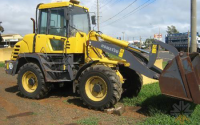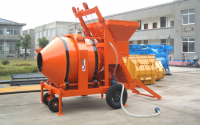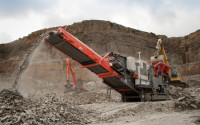A Comprehensive Guide to the Ideal Gold Prospecting Gear
Gold prospecting has captivated adventurers and dreamers for centuries. The appeal of striking it rich and the thrill of exploring the great outdoors make it a timeless quest. The key to a successful and enjoyable prospecting experience lies in having the right prospecting gear. Whether you’re a seasoned prospector or a beginner, the right tools can make all the difference. Let’s dive into essential and advanced gold prospecting equipment, helping you choose the perfect prospecting supplies for your needs.
Fundamental Tools for Gold Prospecting
Gold Pans
The most iconic and fundamental tool in a reliable gold prospecting gear is the gold pan. It’s used to separate gold from sediment by swirling water and gravel, allowing the heavier gold to settle at the bottom. Gold pans come in various sizes and materials, including lightweight plastic and durable metal. Plastic pans are ideal for beginners due to their affordability and ease of use. Metal pans are favoured by experienced prospectors for their longevity. Mastering the art of panning takes practice, but with the right technique you can efficiently extract even the tiniest gold flakes.

Shovels and Scoops
Digging is a big part of gold prospecting, and having the right shovel or scoop is essential. Long-handled shovels are great for moving large amounts of gravel, while short-handled scoops are perfect for precision work in tight spaces. Specialised prospecting shovels often feature serrated edges for cutting through roots and tough soil. When choosing a shovel or scoop, consider durability and size. Opt for this gold prospecting gear made from sturdy materials like stainless steel that can withstand rugged terrain.
Classifiers/Sieves
Classifiers, also known as sieves, are invaluable for sorting gravel by size before panning. They help remove larger rocks and debris, making the panning process more efficient. Classifiers come in various mesh sizes, allowing you to customise the filtration based on the material you’re working with. Stackable classifiers are particularly useful, as they enable progressive sorting, starting with larger mesh sizes and moving to finer ones. This step-by-step approach ensures you don’t miss any hidden gold.
Snuffer Bottles and Vials
Once you’ve panned out your gold, you’ll need a way to collect and store it. Snuffer bottles are designed for precise suction, making it easy to pick up small gold flakes and dust. Vials, on the other hand, are perfect for securely storing your findings. Look for vials with tight-sealing lids to prevent spills and keep your gold safe. These small but essential tools ensure that your hard-earned gold doesn’t go to waste.
Magnifying Glass/Loupe
A magnifying glass or loupe is a must-have for examining small gold particles. It helps you identify gold amidst other minerals and ensures you don’t overlook tiny flakes. When choosing a loupe, consider the magnification level and clarity. A 10x magnification is typically sufficient for most prospecting needs, but higher magnifications can be useful for more detailed inspections.
Advanced Prospecting Equipment

Gold Dredges
For those looking to take their prospecting to the next level, gold dredges are a game-changer. These devices are used to extract gold from underwater deposits, making them ideal for river and stream prospecting. Dredges come in various sizes, from small suction dredges to larger, more powerful models. They can be powered by gasoline engines or electric motors, depending on your needs. Be aware of local regulations and safety considerations, as dredging can be restricted in certain areas.
Highbankers and Sluice Boxes
Highbankers and sluice boxes are designed to process larger volumes of material, making them ideal for prospectors who want to cover more ground. Highbankers are portable and can be set up near water sources, while stationary sluice boxes are perfect for fixed locations. Both devices use sluice matting and riffle designs to trap gold as water flows through. These tools are highly efficient and can significantly increase your gold recovery rate.
Metal Detectors
Metal detectors are essential for locating buried gold nuggets and veins. There are two main types: VLF (Very Low Frequency) and PI (Pulse Induction). VLF detectors are more sensitive to small gold particles, while PI detectors are better suited for deeper, larger nuggets. When using a metal detector, pay attention to sensitivity and discrimination settings to maximise your chances of finding gold.
Concentrators
Concentrators are advanced devices that use gravity and water to separate gold from heavy black sands. They come in various types, including spiral wheels and shaker tables, and are ideal for processing large quantities of concentrates. Concentrators are particularly useful for prospectors who have already collected a significant amount of material and want to refine it further.

Choosing the Right Gear for Your Needs
Location and Terrain
The type of terrain and water sources in your prospecting area will greatly influence the gear you need. A gold dredge or sluice box might be ideal for working in a river. A metal detector and a shovel could be more useful in dry and rocky areas. Consider the specific environment when selecting your prospecting equipment.
Budget
The gold prospecting gear can range from affordable to highly expensive. It’s important to balance cost with quality and durability. Beginners should prioritise essential tools like gold pans, shovels, and classifiers before investing in advanced equipment. As you gain experience, you can gradually expand your toolkit.
Experience Level
Your level of experience will also determine the type of gear you need. Beginners should start with basic tools and techniques, such as panning and using a metal detector. Experienced prospectors may want to invest in advanced equipment like dredges and concentrators to increase their efficiency and gold recovery.



